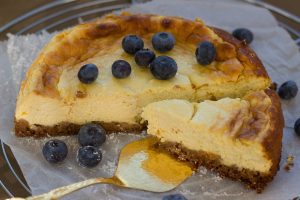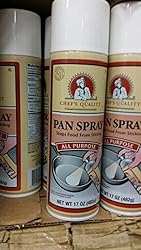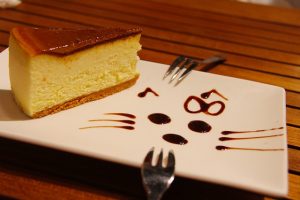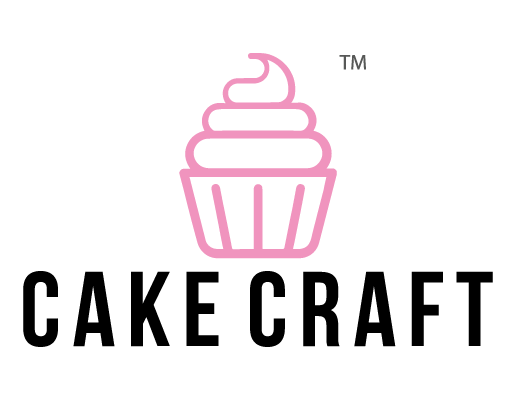Let's Bake
How to Make THE PERFECT Cheesecake (That Doesn’t Crack)
HOW TO MAKE THE PERFECT CHEESECAKE (THAT DOESN’T CRACK)
Have you ever tried to make a cheesecake but was so sadly disappointed because the top cracked?
I feel your pain! You know why – because it’s happened to me too.
Thinking back, I remember when I was young starting to bake. A friend of mine gave me a recipe to make cheesecake and I did everything she told me to do. I followed the directions step-by-step. Despite me following the recipe to the letter, it came out horrible. The top was cracked, browned too much, the cheesecake was sunken, and the crust was mushy.
If you share my cheesecake horror, I would love to help you.

AFFILIATE LINKS: DIY Cake and Crafts is participating in affiliate programs. Some of my posts may contain affiliate links meaning I may receive a small commission at no extra cost to you when you make a qualifying purchase. I only promote products that I have personally used or believe in.
In this tutorial, I’m going to share how to make the perfect cheesecake that doesn’t crack.
TYPES OF CHEESECAKE
There are lots of different types of cheesecake recipes. Some of the most common types of cheesecake recipes are:
– New York Cheesecake
– Ricotta Cheesecake
– No Bake Cheesecake
– Regular Cheesecake (my favorite)
For the purpose of this tutorial, I am going to just talk about the regular cheesecake recipe. The reason I’m sharing these tips is because I think it’s the most versatile of all the cheesecake recipes. These tips apply to most baked cheesecake recipes.
You can change a basic cheesecake recipe a thousand and one different ways. It doesn’t take much to change the flavor of a cheesecake. You can add toppings, add mix-ins and other flavors to totally change the entire flavor profile of your cheesecake. I’ll talk more about this in my No-Fail Cheesecake Recipe.
DO YOU REALLY NEED TO USE A SPRING FORM PAN TO MAKE CHEESECAKE?
NOPE! That’s my simple answer but let me explain why I feel this way.
I hate spring form pans! In fact, I never use these pans for cheesecake. I use a regular cake pan like Wilton type aluminum cake pans.
I do use spring form pans for mouse type layered cakes, but never for cheesecake.
Why, because I find spring form pans are hard to deal with. Also, spring form pans are not always water-tight. If the pan gets warped in any way, you can bet it will never have a water-tight seal. As a result, your crust gets all mushy when water soaks into it.
When I worked in the commercial baking industry, we never used spring form pans for cheesecakes. Regular cake pans were the standard. Just line them with parchment and give them a good spray with non-stick spray for easy release.
My absolutely hands-down favorite pan spray is Chefs Quality All Purpose Pay Spray. It’s the mack-daddy of pan sprays and worth its weight in gold. Nothing sticks, EVER! It’s my go-to for sure.

Now, if you absolutely love spring form pans, wrap the entire bottom and up the sides with aluminum foil to prevent water from seeping in the cracks. Warning, however, try to stay away from spring form pans that have a dark coating as they tend to bake hotter. If that happens, your cheesecake can burn.
I happened to see Amazon has a spring form pan that is 9″ non-stick copper type pan. I can’t say that I have baked in one of these, but if I had to guess, it may work well.
Most baked cheesecake recipes (including my Easy Cheesecake Recipe) will call for placing your cheesecake pan in a bain-marie while it bakes.
WHAT IS A BAIN-MARIE
What’s a bain-marie? In a nutshell, it’s a container or pan with hot water you place your cheesecake pan into while baking. A bain-marie is often called a water bath as well.
Is baking a cheesecake in a bain-marie a MUST? Well, the short answer is no, but I do highly recommend it.
Remember…I’m trying to help save your cheesecake from those dreadful cracks on top.
Baking your cheesecake by placing the pan into another container with hot water while it bakes is a much gentler way to bake your cheesecake. You can bake without the bain-marie but remember I’m trying to help you to make the perfect cheesecake that does not crack. So trust me…use a bain-marie.
HOW TO MAKE THE PERFECT CHEESECAKE (That does not crack)
Ok, so now you know a bain-marie is one of the keys to making the perfect cheesecake that doesn’t crack. But surely it’s not that easy, right?
There are different elements that help you make the perfect cheesecake that doesn’t crack, so stay with me.
Your baking temperature has a lot to do with why you may have burned your last cheesecake. If you bake the cheesecake at too high of a temperature, it will be over-baked.
Yes, you can eat the cheesecake and maybe top it off with some chocolate to hide the imperfections but that’s not our goal today. I want you to ROCK your cheesecake making skills.

When I baked my first cheesecake, I’ll be honest, it was terrible. I remember the recipe called for it to be baked at a really high temperature for the first 15 minutes then turn it down to a lower temp. I then baked it for 2 hours. THAT WAS WAYYYYY TOO LONG, but I didn’t know better back then.
Cheesecake really does not have to be baked at a high temp. I bake mine at 335 degrees at the most.
HOW DO YOU KNOW WHEN A CHEESECAKE IS DONE
So we talked about other key points to making the perfect cheesecake that doesn’t crack. Now I’m going to talk about another important factor when baking cheesecake.
Over-baking cheesecake will definitely make your cheesecake crack. But it’s the combination of all the tips I’m sharing that help you make the perfect cheesecake.
Have you ever made Jello at home? Why am I asking this – I’ll explain. When you make Jello at home and put it in the refrigerator to chill and set up, it has the perfect jiggle when it’s ready. That same jiggle is how you can tell when your cheesecake is done.
CHECKING FOR DONENESS
Your cheesecake is done when you bump the pan, but the cheesecake jiggles as if in one solid jiggle, just like Jello that is fully set up. If it’s jiggly, like water in a cup that ripples in all directions, it’s not done.
Bump the cheesecake pan before you put it in the oven so you know what the uncooked mix looks like. Then later, approximately 45 minutes to an hour, bump your pan again. You will notice the difference.
Once the cheesecake is done, remove it from the oven. Leave it sitting in the bain-marie as it cools off. This helps it to cool off gently at the same temperature as the water in the dish. If you cool off your cheesecake too quickly, it tends to deflate and sink in the middle.
REMOVING CHEESECAKE FROM THE PAN
When the cheesecake is cooled off, do not remove it from the pan. Put it in the refrigerator to completely chill down. Even when cheesecake is fully baked, it’s still soft in the middle. If you de-pan it too early, it will completely crack and fall apart. Chilling it in the refrigerator will help it to set up perfectly.
To remove the cheesecake from the pan, gently run a knife or a small offset spatula between the cheesecake and the pan. Place a piece of plastic wrap over the top of the cheesecake pan and turn it over onto a pan or cake board. Remove the pan and peel away the plastic wrap.
Voila! You should have a beautiful cheesecake that has no cracks on top.
IN SUMMARY:
WHY CHEESECAKE CRACKS ON TOP
Now that we walked through some important steps to making the perfect cheesecake that doesn’t crack, does it make more sense?
Troubleshooting tips to prevent cheesecake cracks on top are:
– Oven is too hot.
– Baking cheesecake without using a bain-marie
– Length of baking time too long
– Cheesecake not cooled properly
So these are my tips for making the perfect cheesecake that doesn’t crack. Now, if you want to know what recipe I use for cheesecake, please check out at my other post here: Easy Cheesecake Recipe
I hope this helps you make the perfect cheesecake that doesn’t crack on top. If you try these tips, would you please come back and share photos of your perfect cheesecake?
Sharing is caring. If these tips helped you, share this post.
…and as always, Happy Baking!


